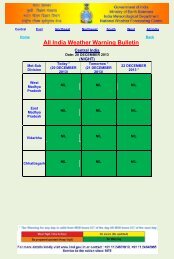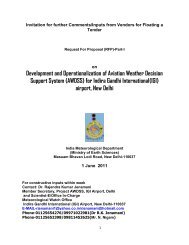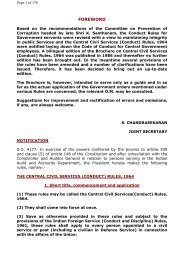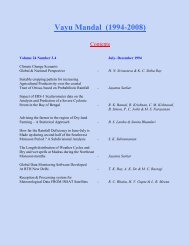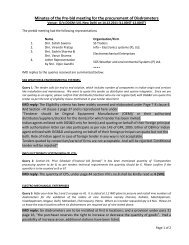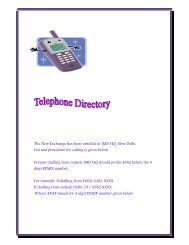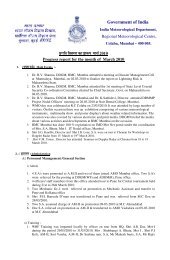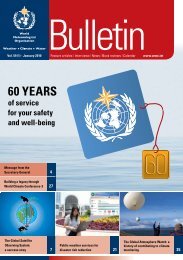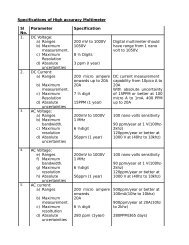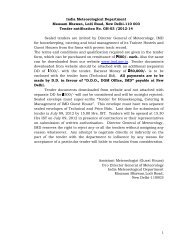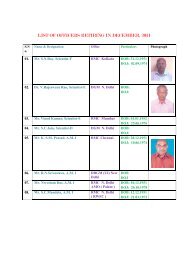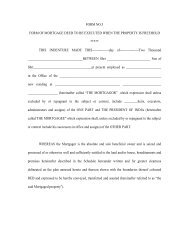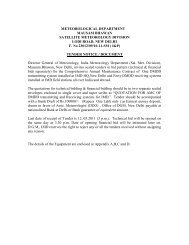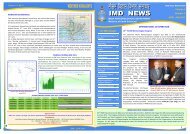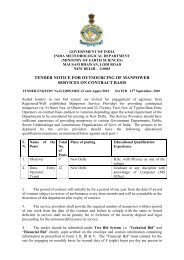Doppler Weather Radar - METNET - India Meteorological Department
Doppler Weather Radar - METNET - India Meteorological Department
Doppler Weather Radar - METNET - India Meteorological Department
Create successful ePaper yourself
Turn your PDF publications into a flip-book with our unique Google optimized e-Paper software.
2. Range and Velocity ambiguities do no occur<br />
3. Clutters are minimal if not totally eliminated.<br />
4. High Data Resolution in Range/Velocity/Reflectivity values<br />
5. Minimal noise<br />
6. Scan to scan interval should be such that even the shortest lived phenomena like<br />
Tornado/Thunderstorm are not missed by radar scans.<br />
Ideally, very close-temporal spaced scans (even closer than 5 minutes) enable continuity of<br />
data especially for better rainfall accumulation estimations, volume scans with closely spaced<br />
elevation angles provide better data sets. But both result in high/voluminous data sets causing<br />
data handling/storage problems.<br />
When no weather is expected, far-temporal spaced scans will be enough to monitor the<br />
changes in the atmosphere and to provide nearby clear-air-return based velocity data. Scan<br />
strategy should therefore be different to suit different situations/locations of radar/seasons etc.<br />
The scan schedule for weather seasons like Pre-monsoon season, Monsoon season and Post<br />
monsoon season generally designed as follows:<br />
1. A long range single elevation scan, generally up to 500 km range, with lowest elevation<br />
angle possible is done to have general observation of the atmosphere around the radar site.<br />
2. A medium range (upto 250 km) multiple elevations scan, called a volume scan is done for<br />
detailed probing of atmosphere.<br />
3. RHI scan is set in WSR-98D/S as a real-time display continually or occasionally as<br />
required. This scan is generally done to probe the vertical extent of severe/tall clouds<br />
which is usually seen is Thunderstorms/Cyclones/Norwesters.<br />
D.2.1. Cone of silence<br />
Close to the radar, data are not available due to the radar’s maximum tilt elevation. This<br />
area is commonly referred to as the radar’s "Cone of Silence".<br />
Figure D.6. Cone of Silence<br />
D.2.2. Operation of <strong>Doppler</strong> <strong>Weather</strong> <strong>Radar</strong>s in IMD<br />
1. Scientific objectives<br />
82



